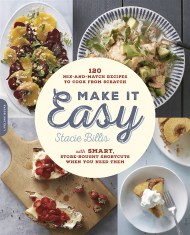Promotion
Use code MOM24 for 20% off site wide + free shipping over $45
Best Food Writing 2016
Contributors
Edited by Holly Hughes
Formats and Prices
Price
$15.99Price
$20.99 CADFormat
Format:
- Trade Paperback $15.99 $20.99 CAD
- ebook $9.99 $12.99 CAD
This item is a preorder. Your payment method will be charged immediately, and the product is expected to ship on or around November 8, 2016. This date is subject to change due to shipping delays beyond our control.
Also available from:
Like your favorite local grocery store, with its sushi bar, fresh baked goods, and maybe a very obliging butcher, Best Food Writing offers a bounty of everything in one place. For seventeen years, Holly Hughes has delved into piles of magazines and newspapers, scanned endless websites and blogs, and foraged through bookstores to provide a robust mix of what’s up in the world of food writing. From the year’s hottest trends (this year: meal kits and extreme dining) to the realities of everyday meals and home cooks (with kids, without; special occasions and every day) to highlighting those chefs whose magic is best spun in their own kitchens, these essays once again skillfully, deliciously evoke what’s on our minds-and our plates. Pull up a chair.
Contributors include:
Betsy Andrews
Jessica Battilana
John Birdsall
Matt Buchanan
Jennifer Cockrall-King
Tove Danovich
Laura Donohue
Daniel Duane
Victoria Pesce Elliott
Edward Frame
Phyllis Grant
Andrew Sean Greer
Kathy Gunst
L. Kasimu Harris
Steve Hoffman
Dianne Jacob
Rowan Jacobsen
Pableaux Johnson
Howie Kahn
Mikki Kendall
Brian Kevin
Kat Kinsman
Todd Kliman
Julia Kramer
Corby Kummer
Francis Lam
Rachel Levin
Brett Martin
Tim Neville
Chris Newens
James Nolan
Keith Pandolfi
Carol Penn-Romine
Michael Procopio
Kathleen Purvis
Alice Randall
Besha Rodell
Helen Rosner
Michael Ruhlman
Oliver Sacks
Andrea Strong
Jason Tesauro
Toni Tipton-Martin
Wells Tower
Luke Tsai
Max Ufberg
Debbie Weingarten
Pete Wells
Genre:
- On Sale
- Nov 8, 2016
- Page Count
- 384 pages
- Publisher
- Da Capo Lifelong Books
- ISBN-13
- 9780738219448
Newsletter Signup
By clicking ‘Sign Up,’ I acknowledge that I have read and agree to Hachette Book Group’s Privacy Policy and Terms of Use






